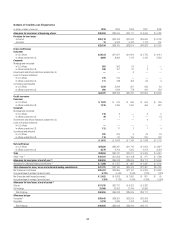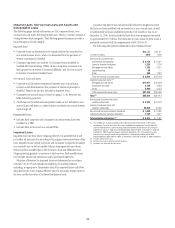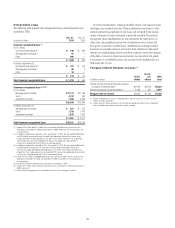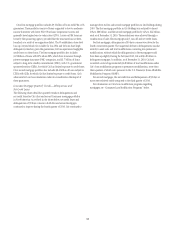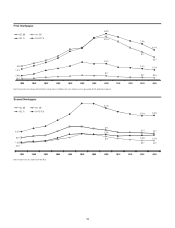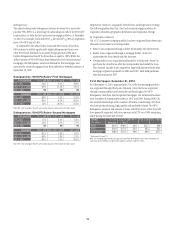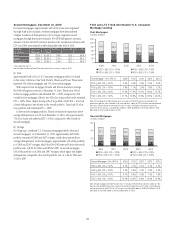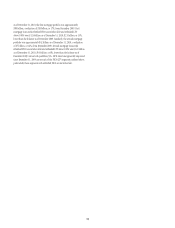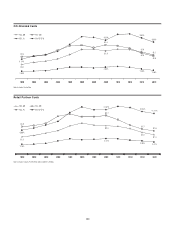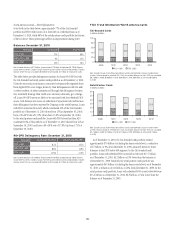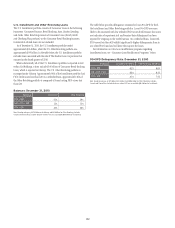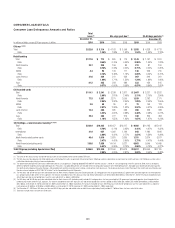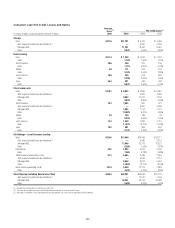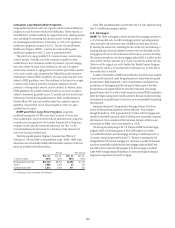Citibank 2010 Annual Report Download - page 97
Download and view the complete annual report
Please find page 97 of the 2010 Citibank annual report below. You can navigate through the pages in the report by either clicking on the pages listed below, or by using the keyword search tool below to find specific information within the annual report.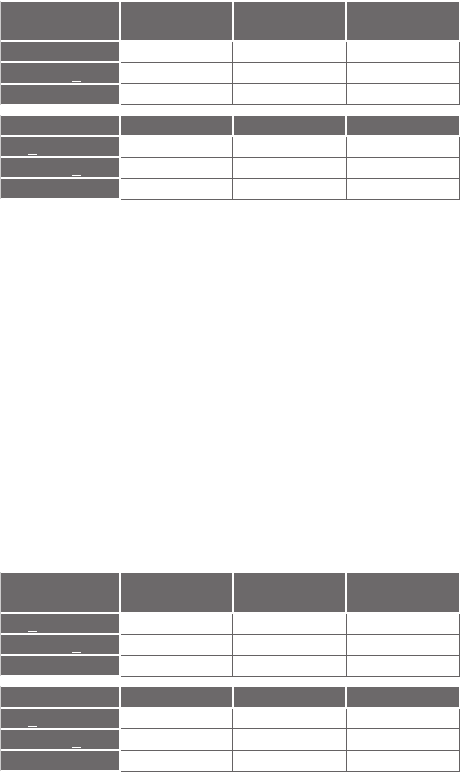
95
Balances: December 31, 2010—First Mortgages
AT
ORIGINATION
FICO ≥ 660 620 ≤ FICO <660 FICO < 620
LTV ≤ 80% 58% 6% 7%
80% < LTV < 100% 14% 7% 8%
LTV > 100% NM NM NM
REFRESHED FICO ≥ 660 620 ≤ FICO < 660 FICO < 620
LTV < 80% 28% 4% 9%
80% < LTV < 100% 18% 3% 8%
LTV > 100% 16% 3% 11%
Note: NM—Not meaningful. First mortgage table excludes loans in Canada and Puerto Rico. Table excludes
loans guaranteed by U.S. government agencies, loans recorded at fair value and loans subject to LTSCs.
Table also excludes $1.6 billion from At Origination balances and $0.4 billion from Refreshed balances for
which FICO or LTV data was unavailable. Balances exclude deferred fees/costs. Refreshed FICO scores
based on updated credit scores obtained from Fair Isaac Corporation. Refreshed LTV ratios are derived
from data at origination updated using mainly the Core Logic Housing Price Index (HPI) or the Federal
Housing Finance Agency Price Index.
Second Mortgages—Loan Balances. In the second mortgage portfolio, the
majority of loans are in the higher FICO categories. Economic conditions
and the decrease in housing prices generally caused a migration towards
lower FICO scores and higher LTV ratios, although the negative migration
slowed during the latter half of 2010. Approximately 48% of second
mortgages had refreshed LTVs above 100%, compared to approximately 0%
at origination. Approximately 17% of second mortgages had FICO scores less
than 620 on a refreshed basis, compared to 3% at origination.
Balances: December 31, 2010—Second Mortgages
AT
ORIGINATION
FICO ≥ 660 620 ≤ FICO < 660 FICO < 620
LTV < 80% 51% 2% 2%
80% < LTV < 100% 41% 3% 1%
LTV > 100% NM NM NM
REFRESHED FICO ≥ 660 620 ≤ FICO < 660 FICO < 620
LTV < 80% 22% 1% 3%
80% < LTV < 100% 20% 2% 4%
LTV > 100% 33% 5% 10%
Note: NM—Not meaningful. Second mortgage table excludes loans in Canada and Puerto Rico. Table
excludes loans subject to LTSCs. Table also excludes $1.5 billion from At Origination balances and
$0.3 billion from Refreshed balances for which FICO or LTV data was unavailable. Balances exclude
deferred fees/costs. Refreshed FICO scores are based on updated credit scores obtained from Fair Isaac
Corporation. Refreshed LTV ratios are derived from data at origination updated using mainly the Core Logic
Housing Price Index (HPI) or the Federal Housing Finance Agency Price Index.
Consumer Mortgage FICO and LTV
Data appearing in the tables below have been sourced from Citigroup’s
risk systems and, as such, may not reconcile with disclosures elsewhere
generally due to differences in methodology or variations in the manner in
which information is captured. Citi has noted such variations in instances
where it believes they could be material to reconcile to the information
presented elsewhere.
Citi’s credit risk policy is not to offer option adjustable rate mortgages
(ARMs)/negative amortizing mortgage products to its customers. As a result,
option ARMs/negative amortizing mortgages represent an insignificant
portion of total balances, since they were acquired only incidentally as part of
prior portfolio and business purchases.
A portion of loans in the U.S. Consumer mortgage portfolio currently
require a payment to satisfy only the current accrued interest for the payment
period, or an interest-only payment. Citi’s mortgage portfolio includes
approximately $27 billion of first- and second-mortgage home equity lines
of credit (HELOCs) that are still within their revolving period and have not
commenced amortization. The interest-only payment feature during the
revolving period is standard for the HELOC product across the industry. The
first mortgage portfolio contains approximately $18 billion of ARMs that
are currently required to make an interest-only payment. These loans will
be required to make a fully amortizing payment upon expiration of their
interest-only payment period, and most will do so within a few years of
origination. Borrowers that are currently required to make an interest-only
payment cannot select a lower payment that would negatively amortize the
loan. First mortgage loans with this payment feature are primarily to high-
credit-quality borrowers that have on average significantly higher origination
and refreshed FICO scores than other loans in the first mortgage portfolio.
Loan Balances
First Mortgages—Loan Balances. As a consequence of the economic
environment and the decrease in housing prices, LTV and FICO scores have
generally deteriorated since origination, although they generally stabilized
during the latter half of 2010. On a refreshed basis, approximately 30% of
first mortgages had a LTV ratio above 100%, compared to approximately 0%
at origination. Approximately 28% of first mortgages had FICO scores less
than 620 on a refreshed basis, compared to 15% at origination.



